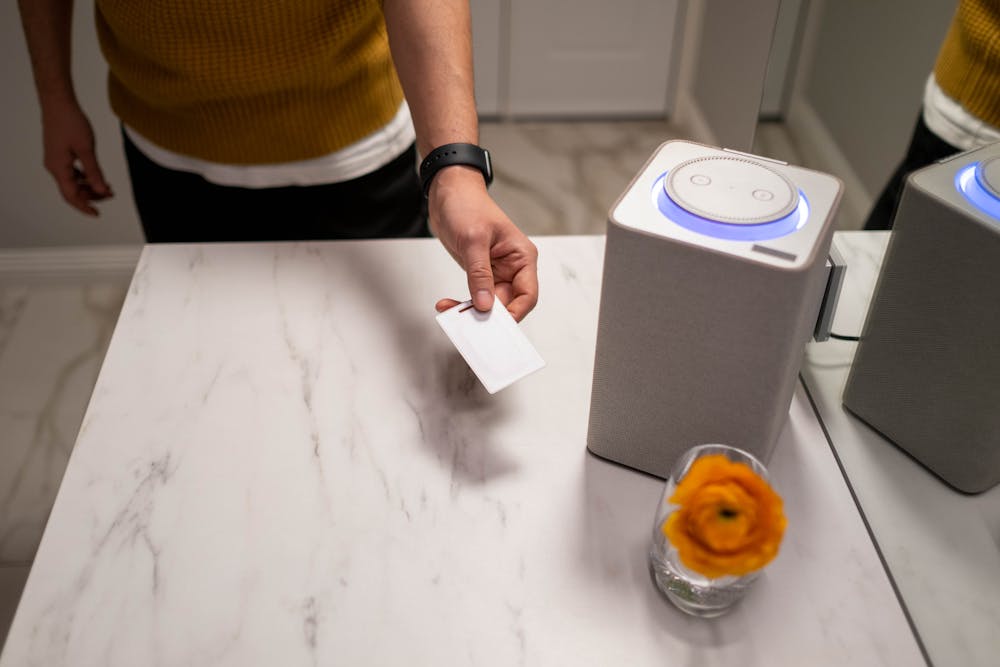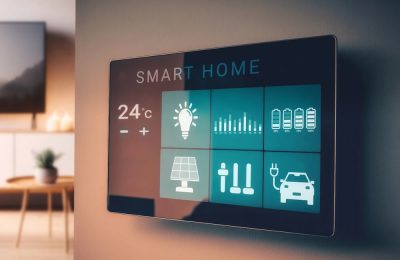October was cybersecurity awareness month, and by no means does it mean that you should wait for providers like your device’s software service to step up their operations while you’re not even aware if the latest updates have been installed. Or are you rigorously checking if the newest security patches are in place? In this case, you’re off to a good start.
Smart homes are the way in 2026 and beyond – they’re convenient, efficient, inviting, and time and money-saving. But the overwhelming number of data breaches and phishing cases can create concerns – albeit they’ve been decreasing. With these considerations in mind, we’re reviewing some of the best tips to implement in your home if you want to maximise the benefits of the upcoming smart home trends without compromising your data privacy and integrity. The smart home market worldwide has experienced steady growth over the past several years and is poised for further expansion – at an even higher rate, with AI, IoT, telehealth, and more redefining industries. This means ticking off the following boxes:
Enhance lazy passwords
Black Friday is just around the corner, and many are counting the days until they’ll get those fresh gadget drops – if you’re the one in luck, you’ll be gifted such godsends. The excitement and curiosity combined make it overwhelmingly tempting to just give in to the pleasure of discovering their ins and outs, thus choosing a quick and easy password for your accounts and getting straight to business. Did you ever promise yourself that you’ll upgrade the passcode later, just to postpone the move until…forever?
Start by breaking the bad habit of using weak and/or guessable passwords like “home123” or “nopassword2025” – not even your favourite actor’s name will cut it. All devices, from your smart lock to your thermostat, should have a unique and complex password – think 12+ characters that combine letters, numbers, and symbols. “5que?$adilL@92^” – type of passcode.
Recognise the attack points
Convenience and comfort are the ethos of every smart home – just as they are convenient and easy gateways for attackers looking to tap into your data and devices. Smart home features can become entry points for malicious actors if they are not secure. For instance, voice assistants like Siri-integrated devices, Google Assistant, and Alexa listen to commands and thus can reveal sensitive information if they get compromised. They can trigger other devices or even unlock your doors when asked to, with just a phrase. Attackers don’t necessarily need to break in like burglars: an unprotected account can be all they need to fulfil their nasty scopes.
Not to strike fear in you, but unprotected security cameras can also open doors for attackers, who can get to spy in real time and gather personal images – or disable alerts if they’re skilled enough. Many breaches occur because homeowners use default passwords and never change them, or use public Wi-Fi.
Real attacks often start from unsecured smart devices, so enhance your passwords, ensure your firmware automatically installs updates, and enable MFA – preferably, right after this article.
Use encrypted mails
If you’re a fervent internet user, chances are that you’ve come across an increasingly popular email domain that’s not “@gmail”, “@outlook”, “@yahoo”, etc. We talk about an email service provider that makes it harder for anyone, from hackers to governments to even the provider itself, to break into your account. Emails are the silent gatekeepers to people’s entire digital lives, including smartphones. So what’s better than an email with next-level encryption in place that keeps data only between the sender and recipient? No marketing, no ads, no sneaking around… no snitch or unwanted presence in your inbox besides you. The biggest of companies protect their business with this type of email service, too.
Encrypted emails safeguard sensitive data against unpermitted access, protect against phishing attacks, prevent data breaches, and comply with HIPAA, GDPR, and other data security regulations. They encrypt email content with encryption methods, blocking unauthorised entities from deciphering it. The same tools make the email content impossible to modify or tamper with during transit. The list of perks that make today’s encrypted email indispensable goes on – perhaps among the best ones is that you’ll no longer stress over creating and remembering passwords like a computer. Can you believe that locking your email – your digital presence’s beating heart – is actually that simple?
Adopt MFA
MFA (multi-factor authentication) may sound uninteresting, if not an already-adopted, default feature your device’s software company has already set up for you in silence. But hear us out: there are platforms or devices that don’t even support this security mechanism, in which case you should really question the provider’s reliability and switch to other brands. When hearing about MFA, many argue they have already set up this mechanism, which often turns out to be a false assumption.
MFA is your best ally in your fight against unauthorised access. It ensures that no one else besides you can verify your identity, not even if your password is stolen. Whether it’s logging into your Wi-Fi or your security camera app, you’ll be asked for an additional confirmation method besides your password. It can be a biometric scan (like your iris or fingerprint), a push notification on your phone, or a one-time code received via email or phone. It’s essentially a straightforward setting that you’ll set up once and reduce the risks that can stem from poorly secured apps.
Use a password manager
Are you using a dedicated password manager to manage your passwords and enhance your smart home’s security? Because many people still rely on browsers like Google Chrome to manage their passwords, disregarding efforts to raise awareness about the importance of transitioning from basic care management to a superior level. A password manager develops and protects all types of login credentials, holding endless different passwords and auto filling them for you so you don’t need to retain such vast information in mind.
There are free or subscription-based password managers, but don’t think you’ll need to break the bank – the fee is about two or three bucks per month. Free versions are usually poorer in offerings. It’s important to look for managers with superior security features – remember that this is the last app you’d want compromised during an attack.
Protecting your smart home begins with all the steps above. So, where will you start?










